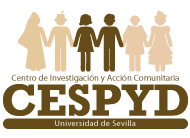
Publicaciones
Training for Roma Health Advocacy: a Case Study of Torreblanca, Seville
Reference: Miranda DE, et al. Capacitación de población gitana en abogacía para la salud: un estudio de caso en Torreblanca, Sevilla. Gac Sanit. 2020. doi: https://doi.org/10.1016/j.gaceta.2020.09.002
Abstract: The objective of this study is to build advocacy capacity among a group of gipsy Roma neighbours living in contexts of risk of social exclusion.
A Community Based Participatory Action Research design was used, in which 4 members of the community participated in the process of collecting evidence by photo-voice, analysing it using the ReACT method and disseminating the results.
A total of 96 pieces of evidence were collected and analysed for qualitative data analysis. These were categorised according to (a) the type of unhealthy conditions and (b) the area of the neighbourhood where they were located. The subsequent thematic grouping made it possible to identify the causes: (a) the abandonment of public services; (b) discrimination; and (c) the lack of Roma presence in community spaces. The consequences identified were (a) mental and physical health problems and (b) the normalisation of undignified living conditions. The plan was designed to advocate for the presence of Roma in community spaces.
Our study highlighted the relevance of the photo-voice to transcend the biomedical perspective and develop advocacy actions based on the knowledge created by the community. Future research should look more deeply into the impact of health advocacy on reducing inequalities and consider the importance of involving researchers, public health professionals and the community in addressing it.
Keywords: Participatory action-research, Health advocacy, Roma, Health inequalities, Social determinants of health.
